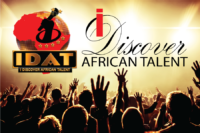
Upon independence in 1960, the former French region of Middle Congo became the Republic of the Congo. A quarter century of experimentation with Marxism was abandoned in 1990 and a democratically elected government took office in 1992. A brief civil war in 1997 restored former Marxist President Denis SASSOU-Nguesso, and ushered in a period of ethnic and political unrest. Southern-based rebel groups agreed to a final peace accord in March 2003, but the calm is tenuous and refugees continue to present a humanitarian crisis. The Republic of Congo is one of Africa’s largest petroleum producers, but with declining production it will need new offshore oil finds to sustain its oil earnings over the long term.
Capital: Brazzaville
Government: Republic
Economy:
- Mixture of subsistence agriculture, an industrial sector based largely on oil and support services, and government spending.
- Oil is a mainstay of the economy, providing a major share of government revenues and exports.
Population: 4.1 million (UN 2011)
Land Size: 342,000 sq km (132,047 sq miles)
Major Ethic Groups:
- Kongo: 48%
- Sangha: 20%
- M’Bochi: 12%
- Teke: 17%
- Europeans and other: 3%
Religions:
- Christian: 50%
- Animist: 48%
- Muslim: 2%
Language(s):
- French (official)
- Lingala and Monokutuba (lingua franca trade languages)
- Many local languages and dialects (of which Kikongo is the most widespread)
For more information about Republic Of The Congo, please visit:
https://www.cia.gov/library/publications/the-world-factbook/geos/cf.html

Leave a Reply
You must be logged in to post a comment.